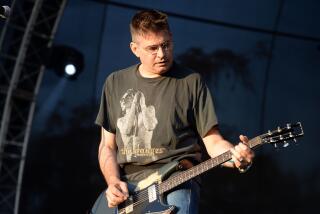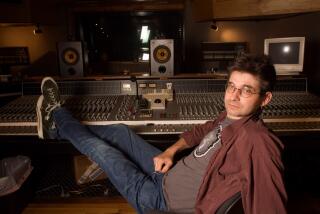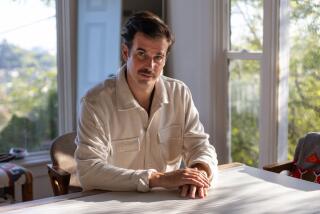An Encounter With a Real ‘60s-Era Radical
Saul Alinsky had only a few months to live when I met him. His skin was as gray and shiny as his suit. His shirt was rumpled. His tie was thin and gray and years out of fashion.
He looked as if he had wandered off the set of a gangster movie. If he had not been the guest speaker, he never would have gotten on the grounds of the exclusive prep school on Chicago’s North Shore.
It was 1972 and Alinsky was a famous radical. But he was not the tie-dyed kind of radical who lived on college campuses and the nightly news. He looked like the real goods: gritty and urban with a tough guy’s sneer.
Forgotten for nearly two decades, Alinsky is hot again now. A new biography by Sanford D. Horwitt, which is 595 pages long and took 10 years to write, is being well-received. The New Republic devoted a seven-page review to it.
“Alinsky’s contribution,” the reviewer wrote, “was to reverse the logic of Progressive-style reform, by wrestling control away from the professional do-gooders and handing it over to the people they were supposed to help.”
The kids at the prep school did not know that. I, a beginning reporter for a suburban paper, did not know that. We only knew Saul Alinsky was a famous radical. One who had passed up an even bigger fee for this evening--being any kind of radical, even a 61-year-old one, could still be lucrative in 1972--because he wanted to talk to high school kids.
But he seemed a little distracted. He had a cold. And every now and then during his speech, he would lapse into a moment of silence. He talked about his work, organizing the tough Back of the Yards neighborhood in Chicago, fighting Eastman Kodak in Rochester, N.Y., and training Cesar Chavez for his farm worker battles in California.
Alinsky explained how you did it: If garbage was not picked up in a neighborhood, you didn’t picket. You drove a truck to the alderman’s house and dumped the garbage on his lawn. If there were rats in buildings, you didn’t pass around a petition. You gathered up the rats and brought them down to city hall.
He had done both of those things. And he had a simple motto to explain his tactics. “If the end doesn’t justify the means,” he said, “what the hell does?”
He ended his speech and took questions. “Ask me anything,” he said. “I’ll tell you the truth.”
The kids thought they were into radicalism, organizing, reform. The children of the upper- and upper-middle class, they fancied themselves the next wave of social consciousness in America. (It is likely that many of them today express this by buying unbleached filters for their coffee makers and using diaper services so as not to clog landfills with Pampers. I am being unfair. But accurate.)
A pretty, long-haired girl sitting in the second row, raised her hand and asked a question. I forget what it was. Alinsky paused, mumbled a reply and paused again. He looked at the girl very hard and asked: “Where are you from?”
Philadelphia, she said.
“Where in Philadelphia?” he asked.
Well, actually the suburbs, she said.
“Which suburb?” he asked.
The kids began to stir, giggle. What was all this about?
The girl named the suburb.
“What does your father do?” Alinsky asked.
He’s an electrical engineer, she said.
“What’s his last name?” he asked.
The kids grew uneasy. Was this some kind of joke?
The girl told Alinsky her last name.
“Spell it,” he commanded.
Why? she asked.
“Why do you think?” he shot back.
I don’t know, she said and paused, but I don’t think it would be for a bad reason.
Alinsky smiled a little sadly, looked down at the lectern and seemed surprised to find himself gripping it so hard.
“It’s just that I . . . responded to you,” he said, stammering slightly. “When I was in college, my first wife . . . she died later . . . well, she looked just like you.”
The kids were silent now.
“I could have invented some reason,” Alinsky said, still looking down at the lectern. “But I told you everything I said tonight would be the truth.”
Afterwards, I interviewed him. I wanted to ask him about the girl and his first wife and why he was so sad, but I didn’t have the nerve. Instead, I asked him about the ‘60s and radicalism and the dangerous times he had lived through.
He shrugged. “Aw, what the hell,” he said. “Nobody gets out of life alive anyway.”
Good to his word, he died a few months later.
So Alinsky did not live through the “Me Decade” or into the “Greed Decade.” But I doubt that he would have changed.
And when I think of him, I always think of him gathering up another rat for a trip down to city hall and wondering about that pretty girl from Philadelphia.
More to Read
Sign up for our Book Club newsletter
Get the latest news, events and more from the Los Angeles Times Book Club, and help us get L.A. reading and talking.
You may occasionally receive promotional content from the Los Angeles Times.






